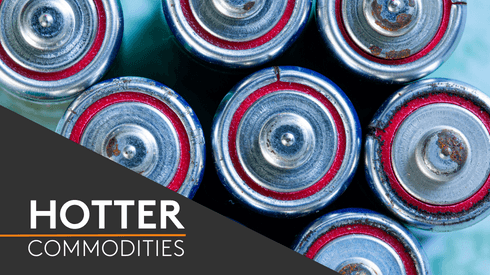The LME three-month copper contract hit $11,104.50 per tonne on Monday, breaking a ceiling set on March 7, 2023, when the contract was at $10,845 per tonne. Monday’s peak was 2.4% higher than that previous all-time high.
Long-term tightness of copper supplies have been in focus recently, with market participants of the view that copper supplies will fall short of demand in the coming years, Fastmarkets understands.
“[Copper] has been well supported by supply tightness in 2024,” ANZ commodity strategist Daniel Haynes said.
Weak concentrates supplies are among other factors that have seen copper concentrate treatment and refining charges (TC/RCs) hit their lowest-ever level, with Fastmarkets’ most recent calculation of the copper concentrates TC index, cif Asia Pacific, at $(3.00) per tonne on May 10 – down from $84.7 per tonne on May 19 2023.
The collapse in TCs came following the closure of First Quantum’s Cobre Panama mine in the last quarter of 2023.
But sources told Fastmarkets that weak production at a number of other mines and limited greenfield expansions had also increased tightness for concentrates.
“If you look upstream there is a tightness in raw materials and that tightness is coming to a metals market near you soon,” Concord Resources head of research, Duncan Hobbs told Fastmarkets, adding that it was worth focusing on how copper mine production lines up with movements in end-user demand.
“The key balance in today’s market is the rate of change in mine supply versus the rate of change in end metal demand,” Hobbs said.
Demand for refined metal was also driving up prices, with market participants expecting demand globally to be the highest on record — despite some lingering concerns about continuing weak demand following the Covid-19 pandemic.
“The headline demand narrative is still too negative,” Hobbs said. “Copper demand is increasing and a number of forecasts show record demand for 2024 – so it’s odd to be talking about weak demand when there are expectations of record consumption.”
Sources also pointed to improvements in the economic situations in both the US and China.
Industrial production data published by China’s National Bureau of Statistics shows growth of 6.7% in May, compared with 5.6% in the same month last year, and, so far this year, every month has showed stronger industrial production growth than last year.
“Metal demand in China is doing well in general,” Amalgamated Metal Trading head of research Dan Smith told Fastmarkets.
“The [upward price] moves aren’t surprising [in this context] – people were too downbeat on China,” he added.
Smith said that inflation in the US was also coming down, which will be positive for metals demand.
US consumer price index data shows inflation at 3.4% so far in May, compared with 4.9% in the same month last year.
Several sources told Fastmarkets that demand for refined copper, in the US in particular, was mainly strong because of spending on the energy transition and led, in part, by the Inflation Reduction Act, and spending in the military sector.
For a number of weeks, market participants have been telling Fastmarkets that strong demand in the US was enough to cause sellers to re-route larger amounts of copper to the country.
“We are pushing everything to the US,” a producer source told Fastmarkets, because demand there is “significantly better” than in Europe.
“Too much of the narrative is focused on regional demand, but the global balance [is the] most important thing,” Hobbs said.
And several market participants said global demand from energy transition uses was helping copper’s fundamentals.
“The fundamentals are pretty good, there are challenges to mine supply with the energy transition improving demand,” Smith said
“Demand isn’t booming,” he added, “but it is good enough to be a challenge [to the supply-demand balance].”
Sources also said that low stocks, both on- and off-exchange, would affect price volatility.
“Low stocks in the US mean that tonnes go very quickly,” a trader source said.
And Smith said: “A decrease in stocks could lead to volatility.”
Off-exchange stock levels have been reduced by high borrowing costs, because storing and financing material is more expensive due to the interest that needs to be paid.
“US interest rates are high enough that people don’t want to sit on stocks,” Smith added.
CME copper stocks have been at an average of 17,211 tonnes so far this year compared with 22,980 tonnes in 2023, 52,133 tonnes in 2022 and 53,086 tonnes in 2021.
Current LME copper stocks are down by 98% since the start of the year, Fastmarkets understands, and although some of the outflows will be to take advantage of the COMEX/LME arbitrage, according to several market participants stocks had already fallen dramatically before the arbitrage window opened.
These low stocks have helped COMEX copper prices push up and have dragged LME copper with it, sources said, with COMEX copper prices increasing by 11% from the start of the month as of Monday May 20.





